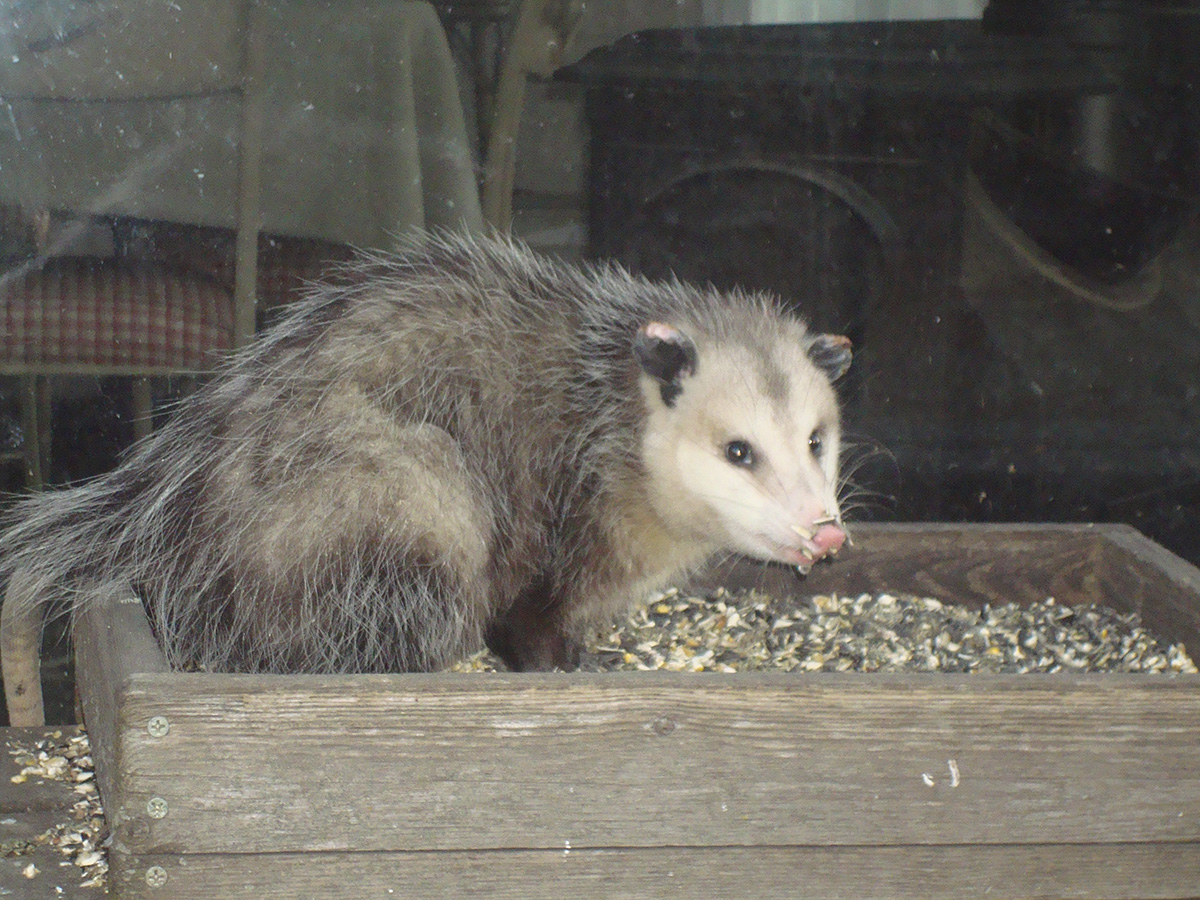
By Soni Cochran, Extension Associate, Lancaster County
Bird feeders are attractive not only to birds, but also to nuisance animals. From starlings to cats and hawks to deer, the seed we provide to bring birds together is like ringing a dinner bell. So what can you do to discourage unwanted seed gobblers and predators of your feathered friends? Discouraging nuisance wildlife is an art and a science. Experts remind us that the tips and tricks we try might work today, but may fail tomorrow. Your best defense is persistence and using a variety of techniques to discourage nuisance animals from your feeders.
NON-NATIVE BIRDS: STARLINGS, ENGLISH HOUSE SPARROWS, PIGEONS:
• Use caged feeders designed to keep out squirrels. These feeders also discourage nusiance birds.
• Try tube feeders with small perches to discourage larger birds.
• Use feeders which require birds to cling to them or hang upside down.
• For English House Sparrows, a wire hoop around the feeder with monofilament lines draped over the hoop have been shown to discourage feeding of sparrows by up to 99%.
• Never feed food scraps, cereals, bread and popcorn at your feeders.
BIRDS OF PREY (RAPTORS): Some hawks prey on smaller birds. These hawks have adaptations allowing them to fly through trees and shrubs as they chase down their next meal. Bird feeders make perfect hunting grounds for raptors. Only 10% of attempts by raptors to capture their prey are successful. You can enjoy witnessing predator-prey behavior or take a few steps to protect songbirds:
• Avoid feeding birds on the ground.
• Place your feeders 10 feet from dense shrubbery. This is close enough for them to get away from raptors but far enough away to prevent an ambush by cats.
• Hang feeders under obstructions like an awning or the eaves of your home.
• Use caged and hanging feeders.
• If a hawk has targeted your backyard as a hunting ground, avoid feeding the birds for a week or two. This should encourage the hawk to move on to a new area.
DEER: Deer will eat birdseed. Here are some tips to protect your feeders from deer:
• Feeders should be at least 6 feet high.
• If deer are butting the feeder or pole to knock the seed out, install a rigid wire fence at least 3 feet away from the pole and 4 feet high.
• Bring your feeders in at night or suspend it on a wire between two trees.
CATS: It does not matter if your cat is your favorite pet or the neighborhood feral cat, both will ambush and kill birds.
• Keep your cat(s) indoors — always.
• Contact your local wildlife control officer to catch and permanently remove feral cats.
• Place feeders 10 feet away from locations where cats can lie in ambush (shrubs, brush piles, trees with low-hanging branches).
• Avoid feeding birds on the ground. Hang feeders high enough cats can’t leap up to get the birds.
GROUND-FEEDING ANIMALS: MICE, VOLES, OPOSSUMS AND SKUNKS: By reducing the amount of seed and waste reaching the ground, you can make your bird feeding area less attractive to nuisance pests.
• Use seed preferred by birds you want to attract so you have less waste. Avoid seed with fillers like milo.
• Use seed without their shells (hulls). You can purchase “no-mess” bird seed without hulls at stores that sell bird seed.
• Do not feed wildlife food scraps including bread, popcorn and more.
• Attach trays under bird feeders to catch falling seed.
• When filling your feeders, be especially careful not to spill seed near your home to avoid attracting rodents.
• Regularly sweep up seed that has fallen to the ground. Not only do layers of fallen seed and hulls attract pests, but this waste also encourages mold growth.
• If you struggle with keeping animal pests away from your feeding area, empty and remove the feeders, sweep up any fallen seed waste, and initiate any control methods. Nebraska Extension’s pest management resources are available at https://wildlife.unl.edu.
SQUIRRELS: See April Nebline for information how to discourage squirrels at your bird feeders.
FOR MORE INFORMATION
Nebraska Extension publication, Selective Bird Feeding: Deterring Nuisance Wildlife from Bird Feeders (EC1783) available at https://wildlife.unl.edu/pdfs/selective-bird-feeding.pdf